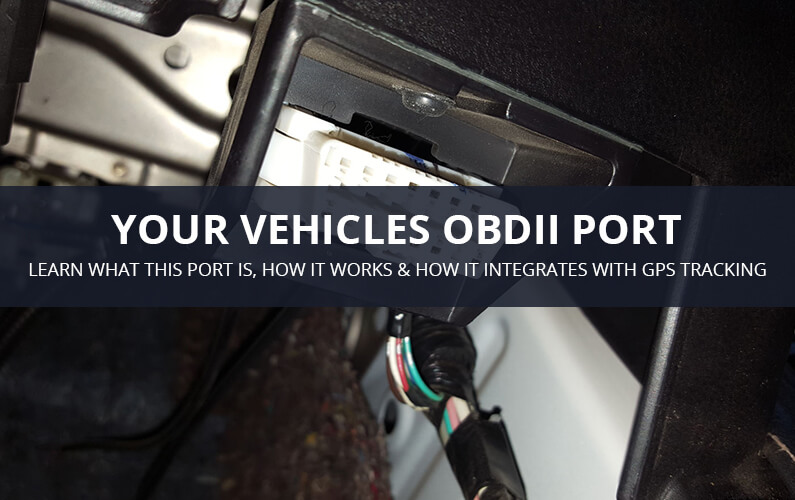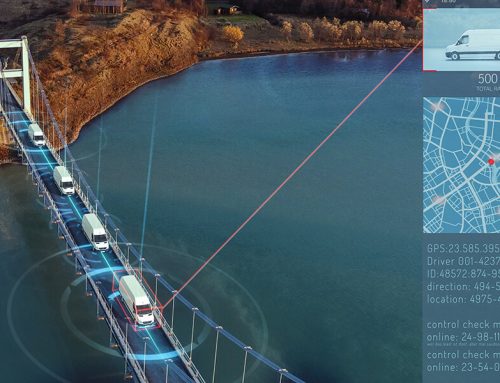What is the OBDII Port and How It Works With OBDII GPS Tracking Devices?
If you have owned a car after the introduction of On-Board Diagnosis in the early 1980s, there are some chances that it has Vehicle OBD Port. However, if you have owned a car after 1996, there are chances that it has OBDII port. OBD was introduced in early 1980s to ensure that the vehicles can be able to detect some of the problems and offer possible solutions without having to involve the owner or the driver.
Since the introduction of OBDII, the amount of diagnostic information which is available via OBD has varied widely. The later versions of OBD have made it easier for the vehicle to detect any problem and deal with them without any issues. OBDII uses a standardized digital communications port which makes it possible to get real time information. It also uses a standardized series of diagnostic trouble codes. This is what makes it easier for someone to detect and remedy malfunctions within the vehicle.
Brief History of OBD Port
The first car manufacturer to introduce this systems is Volkswagen in their Type 3 Models in 1968. 10 years later, Datsun 280Z On-Board computers made their way on consumer vehicles. The main purpose for this was to offer fuel statistics. However, by this time, there was no clear way of understanding the systems but at least they could deal with some car issues.
The deal got into the market in 1980 when General Motors implemented a proprietary interface and protocol for testing of the engine Control Module on the vehicle’s assembly line. In 1996, the OBDII specification was made mandatory for all the cars that were manufactured in the United States.
From 1996, all the truck on the road was legally mandated to have one installed. This on-Board Computer monitors emissions, millage, speed and several other data about your car. OBDII is connected to the Check Engine light and for this reason, it usually illuminate when the computer detects any problem with the engine or any other part of the vehicle. It features a 16-pin port which is located under the driver’s side dash. When there’s an error, you can be able to read it using a special scale tool.
How does it work?
Most of the people don’t know how this on-board computer system works. In simple terms, DTC are stored in the Computer system which can vary from one manufacturer to the other. If you already have any OBDII scan tool, you can then read the codes because of the standardized pin out. If you are looking for OBDII GPS tracking, then you can get in touch with the OBDII GPS tracking Provider GPS Leaders.
OBDII scanners can connect to the OBDII ports and it can later identify the trouble code. It can identify it from any manufacturer that uses one of its protocols. Mechanics had a hard time traditionally to hook up a scan tool to the port so that they can be able to read the Diagnostic Trouble Codes. Most of the scanners that were used could only provide a numeric code. The mechanic would then look at the manufacturer’s service website or manufacturer’s manual so that they can be able to detect the underlying problem and look for possible solutions.
Today, more advanced tools are available. What this means is that a driver can now get all the problems and find out what wrong with their vehicles without having to rely on a mechanic. There are some of the scan tools that help you read the problem with the vehicle on your laptop. You just have to plug one end of this device to the OBDII port and the other side to a windows laptop. The device will temporarily transform your laptop or a computer into an advanced OBD scanner tool.
There are several other wireless tools that can help you do the same. They just require you to connect the two devices via Bluetooth. The good thing is that you can either use a computer or a smart android device.
Where is my OBDII port?
Most of the people have a hard time locating their vehicle’s OBDII port. The fact is that all the vehicles that were sold in the USA from 1996 have a OBDII Port. This port may be located at any of the below places. It can be located the left of the steering wheel just below your dashboard. In some other cases, it may be located just behind the latch. It sometimes contains a protective cover. What this means is that you should open the cover to reveal the OBDII port. Just bear in mind that this port is made to be easily accessible and for this reason it shouldn’t be something to worry you about.
What you can access via OBDII
This port provides access to several things including status information and DTCs for Engine and Transmission and Emission control systems. It can as well revel the below information.
- Vehicle Identification Number
- Calibration Identification Number
- Ignition Counter
- Emissions Control system counters.
There are several trouble codes which cover different potential areas. What this means is that you are likely to find many pages of codes for all the issues that you are likely to encounter.
Advantages of OBD GPS Tracking Devices
There are several advantages of using OBDII GPS trackers. It can offer numerous on Vehicle system detection, diagnosis and much other car problem detection. This is what gives you on-time data of vehicle’s status and notifying you of any danger in advance. At this point in time, we are going to talk about the real benefits of OBDII GPS tracking devices.
Fault Alarm
OBDII GPS tracker will notify you when the vehicle is over speeding, when there’s a fault, harsh acceleration, sharp cornering, harsh braking water high alarm, car battery low charge, bad driving behavior analysis. The main purpose for this is to improve driving quality and safety.
Anti-theft tracking
This is the main reason why most of the people get GPS tracking systems in their vehicles. You can be notified when there’s any danger or if someone tried to open the door forcibly. In case of theft, you can be able to detect the real time location of the vehicle which makes it easy for you to recover the vehicle. You are just supposed to login the web tracking software and after that you can get all the information needed. You can as well request for SMS command to query OBD GPS tracker location.
Real time tracking
This GPS tracking system can make it easy for you to track the vehicle’s real time location and status. Besides giving you notifications about the current problems and the ones you are about to encounter, this system gives you an easy time tracking the current location and status of the vehicle. What this means is that if you are a business owner, then you may need to be sure about the current location of your vehicles.
Monitoring Fuel consumption
It is now easy for you to monitor vehicle’s fuel. It records every trip and at the end of it gives you an analysis of fuel consumption. If you want to have some data about fuel consumption of each trip, then this is the best device to use. They also save the history of each trip and give information about where and when the fuel was consumed exactly.
Monitor the driver’s driving behavior
This is one of the most important things that most of the fleet owners have to look for. The Fact that the OBDII GPS tracker sends all the information concerning harsh braking, harsh acceleration and other driving behaviors, you can be able to detect if your drivers are following all the traffic rules.
They are easy to install
The other good thing about OBDII GPS tracker is that it is easy to install. You don’t need to pay more for installation by an expert because you can just do it yourself. You just have to note where any of the devices should be and the best place to hide it.
You save the money
If you can be able to detect problems before they occur, then there are several things that you can prevent. You don’t have to wait until your car is damaged completely. You can just install OBDII GPS tracking devices in your car and you will get real time information about the issues with your car. You will be able to take appropriate actions without having to wait until something is completely damaged. This saves you money.
Minimize your vehicle’s downtime
This is another benefit that shouldn’t be underestimated. When you get OBDII GPS tracking, you have an easy time going on with your daily choirs. The system gives you real time information about any problems and for this reason, you can deal with them before the situation gets out of hand. This helps to reduce the vehicle’s downtime significantly which impacts on your company’s productivity.



